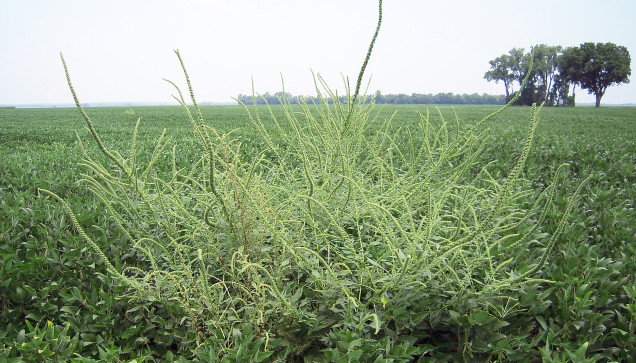The 2016 University of Illinois Plant Clinic herbicide resistance report has shown that glyphosate herbicide resistance and PPO Inhibitor herbicide resistance have both reached epic proportions across the Midwest of the United States.

2,000 waterhemp or palmer amaranth weed samples were received by the University of Illinois Plant Clinic from 10 states across the Midwest, amazingly 456 of the whole field sites showed Glyphosate Resistance – a total of 76.8% of the 593 sites.
Meanwhile, 62.5% of the weed samples on the whole field sites showed resistance to PPO inhibitor herbicides. Also, 49% of weeds on the whole field sites showed resistance to both PPO inhibitor herbicides and glyphosate herbicides.
THE GLYPHOSATE BOX
Glyphosate in Popular American Foods
1o Things You Need to Know about Glyphosate
In Illinois, where the majority of samples were from, samples from 52 counties had at least one sampled field that had waterhemp or palmer amaranth plants that tested resistant to both glyphosate and PPO inhibitors.
Until the 2016 season, palmer amaranth in Illinois was not known to be resistant to PPO inhibitors. However, several samples from southwestern Illinois were confirmed to be PPO inhibitor resistant (3 from Madison, and 1 from St. Clair counties) in the testing.
The University of Illinois Plant Clinic report has allegedly led many Midwest farmers to question the glyphosate resistant (Roundup Ready) GMO crops that have been pushed on them over the last 20 years by Biotech giants such as Monsanto.
Bill Giles, a farmer from Illinois, who has been growing GM crops since 2009, told Sustainable Pulse that many farmers in his local region are thinking of turning back to non-GMO crops to survive the superweed crisis.
Giles stated; “GM crops are on the edge of failure in the U.S. as farmers are asked to fork out more and more money on herbicides to try to control the superweeds. We simply can’t afford it! It is near the end of the road for these crops and many of my friends in the Midwest are on the edge of turning back to conventional farming methods.”


















THANK YOU JESUS!!!!! It’s about time,people realize that monsatan must go!!! I don’t buy ANYTHING that is made by monsatan or is a GMO! I hope monsatan and friends Wind up going in the toilet!
I’m with you Debbie. The whole Gm imbroglio just makes my blood boil